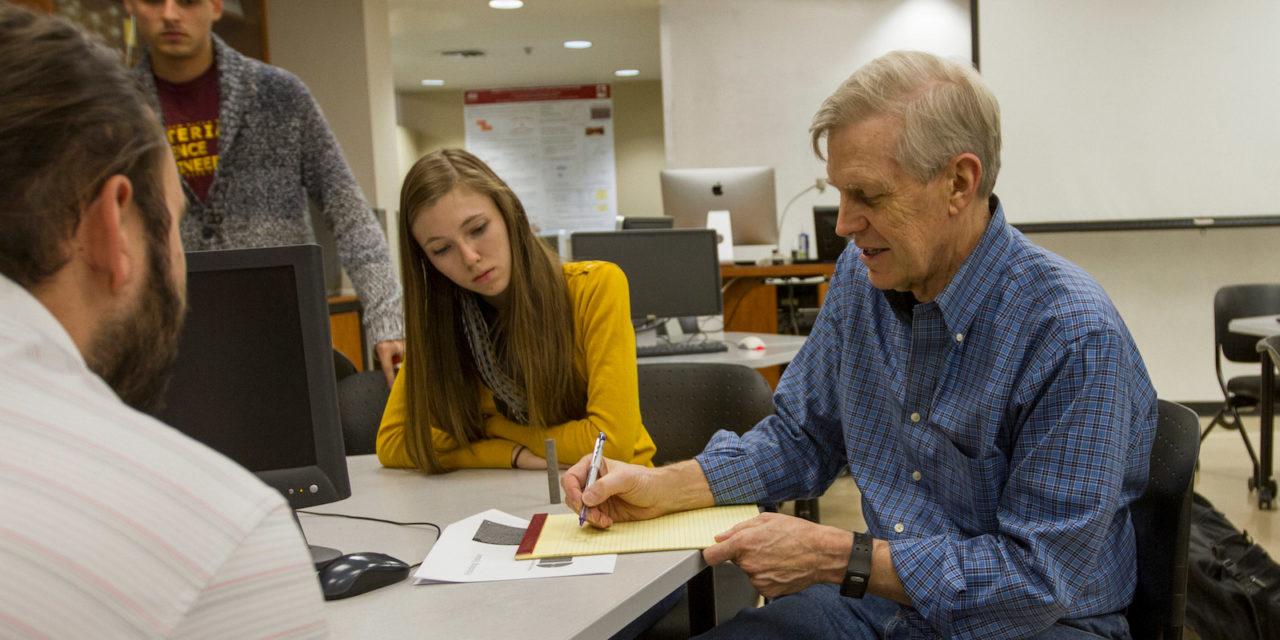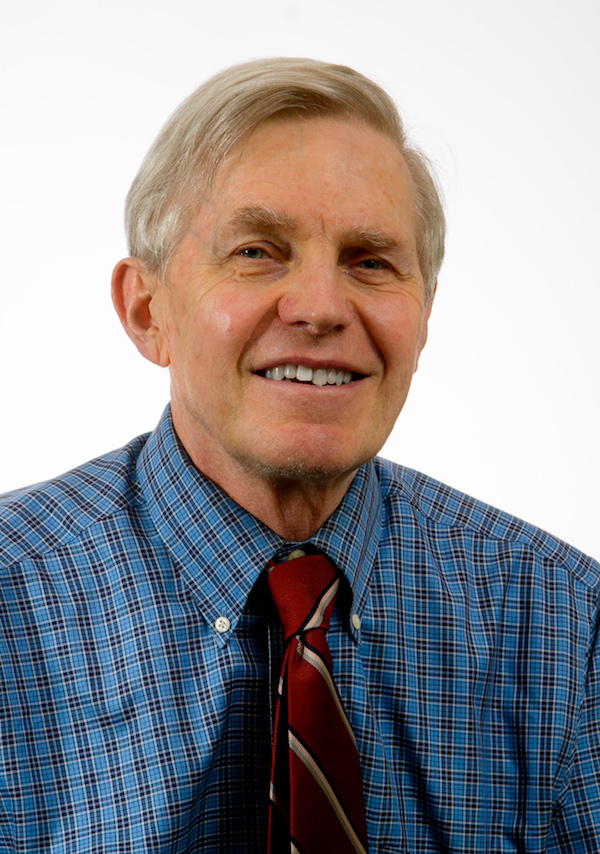
ASU professor modernizes lectures with formative feedback

Above: Stephen Krause, a materials science and engineering professor, received the Michael Ashby Outstanding Materials Educator Award this summer for his research and work on the formative feedback model, which he used to enhance his students’ classroom experience. Photographer: Nora Skrodenis
Stephen Krause has spent nearly 20 years tailoring his teaching style to fit his students’ needs. This summer, the Arizona State University materials science and engineering professor was awarded the Michael Ashby Outstanding Materials Educator Award by the Materials Division of American Society of Engineering Education for his impact in shaping how students are taught.
In the 1960s, Stephen Krause was an undergraduate studying materials science and engineering. The classroom he learned in was not so different from the classrooms some engineering students experience today.
“All of my classes were lectures,” Krause said. “I felt like I was always being lectured to and had to do a lot of self-teaching.”

Stephen Krause
Fast forward to 1981, and Krause found himself in the very shoes of his previous professors– teaching a traditionally lectured class in materials science. The experience was reminiscent of his time as a student. For the next 20 years he worked to improve this approach but, like many other professors teaching a tough subject in a lecture hall, it was hard to keep students engaged.
There had to be a better way.
So, Krause began to collect short, written comments from his students at the end of every class responding to the questions “What was the muddiest point of the lecture today?” and “What was the most interesting thing you learned today?” The results surprised him.
The muddiest or confusing points weren’t always complicated, abstract concepts. Sometimes, students weren’t clear on how to read a graph or the meaning of a word. Using this information, he began to discover students’ misconceptions as well as his own instructor “blind spots,” or his own faulty assumptions about students difficulties.
To help explain the muddiest points, Krause reviewed and responded to the most prominent feedback questions at the beginning of each class. This helped address the students’ learning difficulties. With the knowledge and insight he gained from his method of formative feedback, Krause developed better strategies for instructing his students.
The students’ retention and grades improved as his teaching evolved and he continued incorporating formative feedback. He then added engagement activities to his class time for added participation.
“When [students] engage with one another, it makes it easier to learn,” Krause said of the engagement and feedback format. “It creates a richer, fuller learning experience.”
From there, Krause shared this teaching method on a broader scale, beyond materials science, first to a few faculty members at other universities, then with his colleagues at ASU. Between 2007 and 2015, the National Science Foundation awarded three grants for projects Krause led to expanding the engagement and feedback system. In 2015, the third grant was awarded, worth $1.5 million, to expand the methodology across disciplines.
A team of seven investigators worked with 80 faculty members across seven disciplines in the ASU Ira A. Fulton Schools of Engineering to shape beliefs on what teaching strategies could be employed for more effective instruction and learning. They aimed to have more professors use real-world examples in their teaching, create active engagement and use formative feedback to uncover student learning issues, among other evidence-based teaching strategies.
Through Krause’s experience, he says he feels that while the students of today are bright, they sometimes have shorter attention spans. So, he believes using the engagement and feedback system creates a more effective, engaging way to learn.
Later, one of his teaching assistants, Bethany Smith, created 20 short videos to address students’ muddiest points across a semester. Their YouTube channel, MaterialsConcepts, has garnered almost 1.4 million views since they began in 2012.
Smith worked with Krause for five years- first as an undergraduate teaching assistant and then as a research assistant while pursuing a master’s degree.
“Professors are sometimes scary for underclassmen,” Smith said. “With formative feedback, they get a chance to ask without feeling judged. It helps to feel that you’re not dumb and that there are others who have the same questions you do.”
ASEE’s Michael Ashby Outstanding Materials Educator Award recognizes not only Krause’s research publications and conference contributions within the materials science community but also his collaboration across disciplines in shaping the way students are taught. At the ASEE conference, he presented a talk about his research and experience with formative feedback.
“Professor Krause is probably one of the best mentors that I’ve ever had,” Smith said. “For about five years, I worked with him on education materials. It really inspired me to be a professor to change the system into a kinder, better education experience.”
The work on the engagement and feedback system is ongoing. Over the next year, Krause’s team will continue analysis on the extended faculty-focused program and its impact on both faculty teaching strategies and the associated effect on student achievement.
Krause believes the work will back up what he has personally experienced in the classroom and hopes that the evidence will show the approach works, even outside of the materials engineering lecture hall. Today’s classrooms will look like they belong in the 21st century.



































